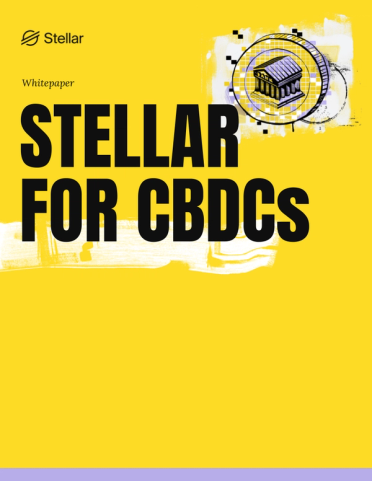
Whitepaper
Stellar for CBDCs
A growing number of central banks around the world are exploring the possibility of central bank digital currencies (“CBDCs”). And the COVID pandemic has only accelerated the situation, with lawmakers and regulators even more willing to consider new technologies that could improve the lives of their citizens. Whether focused on increased competition in financial services, greater ease of distributing social benefit payments, or bringing safety and security to the unbanked, central banks are imagining the promise and possibility of CBDCs.
Currencies issued by sovereign states remain important financial instruments, and issuing them on a blockchain has positive implications for the global monetary system.
The Stellar network was built precisely with this use case in mind: allow trusted issuers to create digital representations of their assets. The network is uniquely suited to CBDCs precisely because it capitalizes on the trust inherent in asset issuers. Though a public blockchain, Stellar does not support mining. Rather, it bases security on two assumptions: First, each issuer wants to ensure the security of its own asset, and therefore can be trusted to provide the canonical truth about that asset. Second, issuers have a strong desire to interoperate with the rest of the world, and hence will not "cheat" or unilaterally deviate from the rules if doing so would cut them off from the world. Governance power stems from the value of assets in the ledger and participants' desire to remain in sync with the parties who issue and redeem those assets. The interoperability, security and safety of these assets can be ensured, even without any single entity having control of the underlying infrastructure - in fact, it is because there is no single source of control that the system maintains the necessary protections.
This paper is an introduction to the Stellar network, and how it can be used for CBDCs.
Get Yours
Download your free whitepaper
In this whitepaper, you will learn:
- Which features of Stellar are most relevant to asset issuance, and therefore to central banks considering CBDCs.
- How to implement a CBDC on Stellar, highlighting how the key features would benefit a central bank.
- About Stellar’s novel consensus algorithm in more detail, for readers who want a more in-depth understanding of how Stellar’s unique design creates the features and characteristics beneficial to central banks.